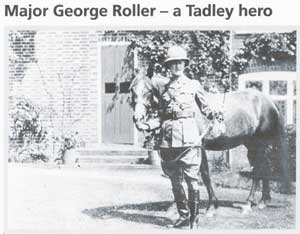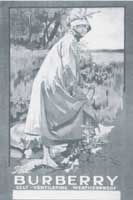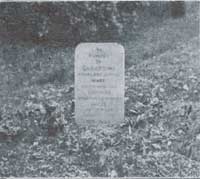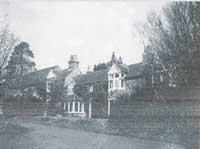Portrait
of Major George
Conrad Roller
John Singer
Sargent -- American
painter
c. 1892?
Private
collection
Oil
16.5 x 17 in.
Jpg: Askart.com

Prophets:
Zephaniah, Joel, Obadiah, Hosea
(on
West Wall)
Boston
Public Library Mural
Sargent enlisted
the help of a number
of his friends to model for head studies for the Boston mural -- Frieze
of Prophets. It was a fun thing for him to put the likeness of his
friends
in the murals. He had done it when he was painting in Paris in 1877 at
the Palais du Luxembourg under the apprenticeship of Carolus-Duran. He
and his friend James
Carroll Beckwith had painted each other's faces in the mural "The
triumph of Maria de Medici".
George Conrad
Roller was a friend
and neighbor of John at Fairford and loaned him a house to stay for a
while.
Roller was also an amateur artist whom would later turn professional,
traveling
with Sargent on one (if not more) of his trips to the south of Europe.
In 1910 Sargent
painted "The
Cashmere Shawl" and inscribed it to George Roller.
From: Michael Roller
ro ll ers@ukgateway.net
Date: Oct 11, 2005
I'm
forwarding to you something about George Roller put out by a Local Historical Society.

 |
Tadley and District
History Society
Major George Roller - a Tadley hero
Tadley
and District Historical Society
ProjectNews
Issue 8
June 2005
Multi-talented local resident Major George C Roller
(1856-1941) was an artist, a soldier who served in both the Boer War
and World War I, a steeplechase rider, a London Magistrate, and a
Governor of London Hospitals and the Royal Berkshire Hospital. He
excelled at all these tasks, but it is his skill as a painter/artist,
and in particular a picture restorer, that he was known world-wide. For
much of his life George lived in Tadley: at The Wilderness (now Tadley
Court) and The Cottage (now Rollers).
Early years
(parents, education etc)
George Conrad Roller was born on 10 June 1856, the eldest son of
Frederick and Eva Roller. His father, a naturalised British subject,
was born in Germany and his mother in Flintshire. Frederick was born in
1817 and emigrated to England in 1842, where he married Eva Eyton in
1853. The Eytons were a well known Welsh family and for Frederick
Roller to have the permission of Eva’s father to marry her, when he was
not naturalised as a British citizen, is a sign that he must have been
successful in his business. He was a partner in a firm of import
merchants, importing the bark of the chinchona tree from South America,
which was used to make
quinine.
In 1857 Frederick became a naturalised British citizen. The certifi
cate of naturalisation says that he sought to become naturalised in
order to purchase the freehold of a house at Clapham Common. This house
would have been The
Grange where the family lived for a long time. Their eldest child,
George,
would have been a year old at that time, and this is possibly another
reason why
Frederick decided to become naturalised.
By the 1861 census the family (Frederick, Eva and their children
George, William and John) were
listed as living in New Park, Wandsworth. An 1862 trade directory lists
Frederick as a general merchant working from premises in Love Lane,
Eastcheap.
George’s
artistic career
George was educated at Westminster
School, from where he went on to study art in London at Lambeth Art
School and then in Paris under Bouguereau and Fleury.
He was known
primarily as a portrait painter but he also painted a number of
sporting and equestrian subjects – his horses were beautifully painted
with superb movement. He was also Sporting Advertisement Designer to
Burberry for over 30 years and picture restorer to the Royal Academy
for 20 years.
He was a long time friend of the artist John Singer
Sargent (1856-1925) and was thought to have travelled with him on
painting trips abroad. Sargent, an American portrait painter, was
recognised as the leading portraitist in England and the United States
at the turn of the century, acclaimed for his elegant and very stylish
depictions of high society. There are several paintings by Sargent of
members of the Roller family, including George and his mother.
During
his working life George exhibited at many galleries, mostly between
1884-1906. One of his paintings, exhibited in 1904 and now in The
Museum of Reading, shows an impressive Boer War battle scene with Major
WH Mullens and his squadron of the Middlesex Yeomanry. He was elected
to the Royal Society of Painters-Etchers and Engravers in 1885 and his
work was illustrated in The Graphic and Illustrated News. He also
contributed to several publications including Black and White, Pick Me
Up and Pall Mall.
His brother, the cricketer William Eyton Roller, was
a distinguished batsman who played for Surrey in the latter part of the
19th Century. A painting by George hangs in Surrey County Cricket Club
and shows his brother walking down the pavilion steps at the Oval.
As well as being a recognised painter, George was also a renowned
picture restorer to important galleries in England, America and on the
Continent. Amongst his clients was the Royal Academy, for whom he
worked for 20 years. One commission from the Royal Academy was for the
restoration of three pictures damaged by Suffragettes in May 1914.
The
Burberry connection

Roller's Burberry Ad
During the late 19th and early 20th centuries the
Roller family had close links with Burberry. Today the firm is well
known for its upmarket fashion clothing with its distinctive check
patterned cloth (originally the design for their coat linings).
However, the firm had very different origins in the 19th century.
Thomas Burberry opened his first outfitters shop at the age of 21 in
Winchester Street, Basingstoke (1856). He was not just interested in
making and selling clothes, but also in the reasons why they were worn.
After experimentation he successfully developed a cotton woven
weatherproof material which he called gabardine. The material was
completely waterproof yet was cool and comfortable to wear. Famous for
outdoor clothing for sports, explorers and the forces, the firm became
very successful; by 1871 the Basingstoke shop employed 80 staff. In
1891 the firm opened a new store in London, at 18-22 Haymarket; in 1912
they moved to new premises at 30 Haymarket, which is the firm’s
headquarters today.

Roller's Burberry Ad Drawing
Thomas Burberry was an ardent Baptist, teetotaller,
non smoker and keen sportsman. By Roller’s account, it seems to have
been through their shared interest in horses that they became friends
which led to him starting his artistic career with the company. He
illustrated Burberry’s advertisements for nearly 40 years. A visit by
TADS to the Burberry archives in 2000 highlighted the extent and
importance of his role in creating and maintaining Burberry’s image
during the early 1900s; in the era before the widespread use of
photography in clothing advertising, the majority of line drawings used
in Burberry’s advertising bore Roller’s signature. He continued this
work during his army career; while stationed in Newbridge, Ireland he
used army personnel to model Burberry’s clothes for him to draw!
His younger
brother, Frederick, was also connected with the company – as a company
solicitor and by the mid 1920s as a member of the board of
directors.
Gabardine
Thomas Burberry made Roller a gift of a horse that
Thomas described as ‘painfully small and nondescript and looking like a
brown bear’. It seems that Burberry’s groom had made a mistake in
offering this particular mare. However, time showed that this small
beast, named Gabardine, although ‘funny tempered and having no nice
feelings for anyone’ was a tough, speedy, brave mare ‘who could bound
over obstacles like an india-rubber ball’. Gabardine carried Major
Roller through the Boer War and he was convinced that the mare’s
qualities saved his life on more than one occasion during the
campaign.

Gabardine's Stone
George’s
military career
As well as his artistic career, George
also had a long and successful military career. He served in the Old
Middlesex Company Yeomanry for twenty years, rising to the rank of
Company Sergeant-Major. In 1898-99 he joined the recently formed 34th
Company of the Middlesex Imperial Yeomanry and served in the Boer War.
He went out to South Africa in 1899 and came home in June 1900. He was
mentioned in General Rundle’s farewell speech in Harrismith on 13 June
1900, was in Lord Roberts’ list of recommendations for meritorious
services (4 September 1901) and was awarded the Distinguished Conduct
Medal (DCM) (The London Gazette, 27 September 1901).
Stories concerning
George’s military activities and exploits abound, his horse, Gabardine,
featuring in one of them. During the Boer War, he was the officer in
command of the 34th Company at Senekal Kopje (25 May 1900) when it was
engaged in a hopeless attack against the Boers who were positioned
safely at the top of a steep slope. The yeomanry were forced to
dismount under withering fire and lie down. Every horse was shot,
except Gabardine. Only six men survived but George crawled to a safe
spot, dragging a wounded colleague. He managed to recall Gabardine and
pull the unconscious soldier across the mare’s
back and ride to safety. George was recommended for the Victoria Cross
by General Rundle but, unfortunately, there were no officers alive to
confirm this brave action. He was however promoted to the rank of
Lieutenant, the Commission being confirmed at Klip Nek, July 1900 and
recorded in The London Gazette of 27 September 1901.
He continued to
serve with the Middlesex Yeomanry until 1911, and during World War I
commanded the 3/3 County of London Yeomanry (1914-16). Later, he was
seconded to the Field Artillery serving in France, but was invalided
out of the army in 1918 retaining the rank of honorary Major.
Local
connections
George had addresses both in London and Tadley.
The family
home at the time of his birth was The Grange, Clapham Common and
through the years George seems to have kept a London address, certainly
there would have been a need for his picture restoration business.
Locally, George is linked to The Wilderness, now Tadley Court. It is
not known how or why he came to live in Tadley. Throughout the 1900s
Kelly’s Directory lists him as living in
either The Wilderness or The Cottage, a property in the grounds of The
Wilderness, now known as Rollers.
Edgar Grundy of Haughurst Hill, at
the age of 74, remembered the Major well: ‘I remember when I was a boy
I used to go out on the common with my friends to watch him with the
horse (Gaberdine). Major Roller used to ride up on his horse, get off
and say ‘enemy advance’. The horse would lie down. He would then get
down behind his horse and pretend to fire a gun from behind its body.
If he let that horse loose it would follow him anywhere… just like a
dog. I can’t remember its name now, but you know that horse was 35
years old when it died.’
In later years, George was a well-known and
respected local resident; for many years he was President of the Tadley
branch of the Royal British Legion.
Royal
Berkshire Hospital
As well as
being a governor of several London hospitals he was also an honorary
life governor of the Royal Berkshire Hospital from 1928/29 until his
death in 1941. This was in appreciation for restoring oil paintings of
first Lord Sidmouth, Mr
Richard Benyon de Beauvoir and Dr Ring.
The Roller
family
George married
Mary Margaret Halliday in 1887; they had a son, George Trevor, who died
in 1947, and a daughter, Miriam, who died in 1928. Mary died in 1908
and in 1910 George married Emily Kirk Craig. They had no children.

Rollers, George Roller’s Tadley
residence in his later life
George died on 4 January 1941 and was buried in the graveyard at St
Peter’s Church, Tadley beside his first wife Mary and their daughter.
His second wife, Emily survived him by eight years, dying in
1949.
References etc
Burberry’s archives, Haymarket, London.Open Spaces;
unknown; Burberrys C1934.The Story Of The 34th Company (Middlesex)
Imperial Yeomanry; William Corner; T Fisher Unwin 1902.The hard work
researching and writing this article was done by the TADS Project
Group. Many others have helped, including David Quelch (Burberry
archivist). Researching this article has produced a great deal more
material than we could include in these three pages. TADS hopes to be
able to publish a booket about George Roller’s life and times later
this year.
|
An indirect way of reaching them would be
through: (Berkshire
Local History Association) |
Note:
Special thanks to
Michael &
Susan Roller, of the UK, friends
of the JSS Gallery, for sending along this info.
Sold Christie's;
5/26/93; Lot 70; $79,500
Date estimated by
Olson's book. Olson
identifies Roller as a "Captain" not a "Major".
I'm a bit confused
on the inscription
of "The Cashmere Shawl" I don't know where I got that
information
and I don't see any inscription on the image of the painting.
|







